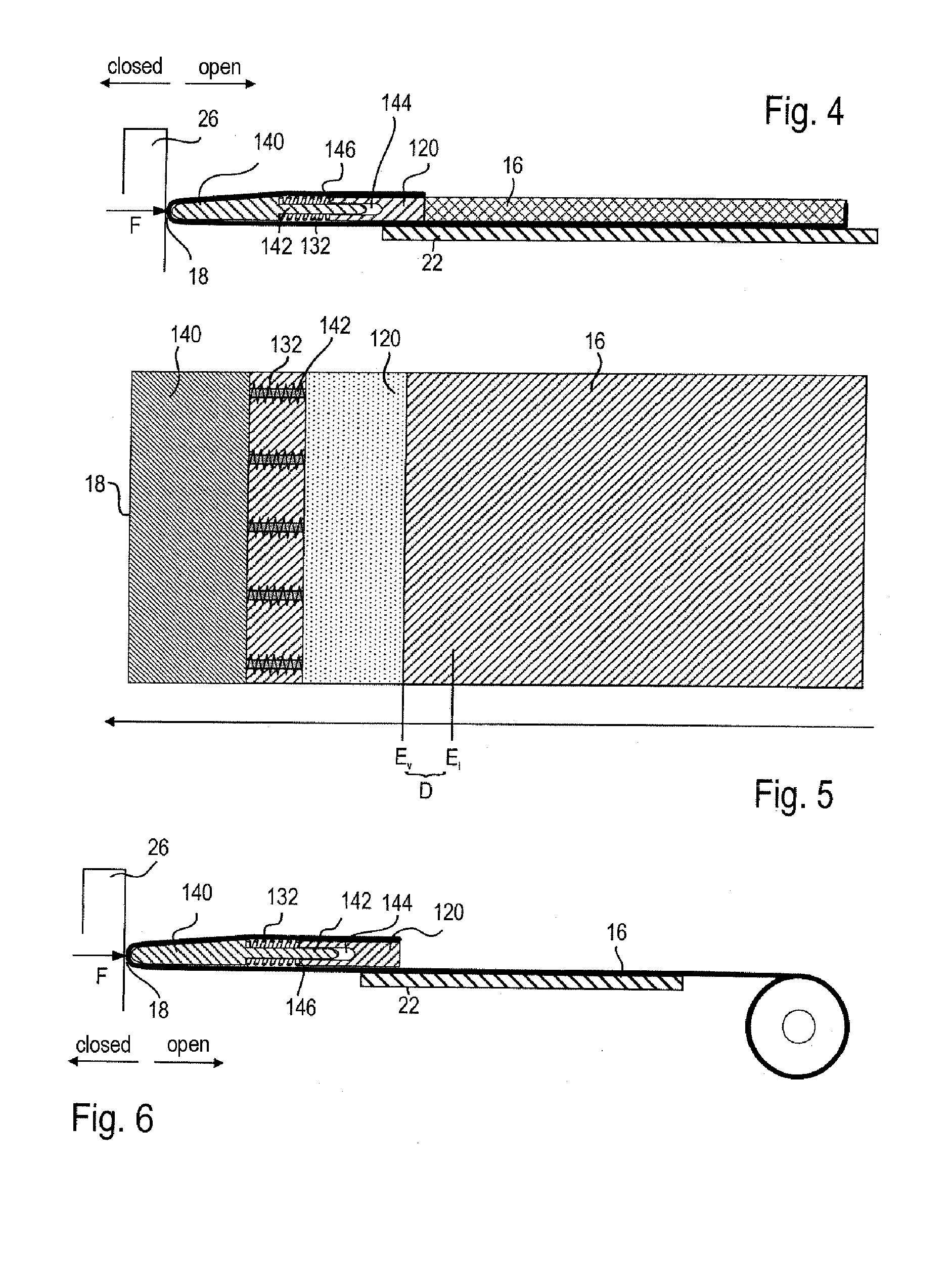Sliding roof sunshade assembly
a technology for sliding roofs and sunshade assemblies, which is applied in the direction of roofs, superstructure subunits, mechanical equipment, etc., can solve the problems of reducing the clear width of the roof opening, disturbing, and giving the vehicle occupants the impression of a smaller roof opening
- Summary
- Abstract
- Description
- Claims
- Application Information
AI Technical Summary
Benefits of technology
Problems solved by technology
Method used
Image
Examples
first embodiment
In the first embodiment shown in FIG. 3, the bow 20 is connected, in the region of the front end 18 of the sunshade element 16 (which is merely indicated here), to the drive element 22 in such a way as to be mounted linearly movably with respect thereto. In this case, the drive element 22 is a cable which is guided to be resistant to tension and rigid in compression.
The bow 20 has a fastening section 30 which engages around the drive element 22 and which is fastened to an elastic intermediate element 32, which is designed as a spiral spring. The elastic intermediate element 32 in turn extends between the fastening section 30 on the bow 20 and a stop 34 which is fixed to the drive element, to which stop 34 said elastic intermediate element 32 is likewise fastened. The bow 20 can be moved along the drive element 22 counter to the spring force of the elastic intermediate element 32, in particular in the direction of the stop 34, that is to say to the right in FIG. 3.
Here, the bow 20 an...
second embodiment
FIGS. 4 to 7 show a second embodiment in which an elastic intermediate element 132 is arranged between the front end 18 of the sunshade element 16 and a bow 120.
The sunshade element 16 has, at its front end 18, a closure element 140 which is designed as a rigid component which extends over the entire width of the sunshade element 16. The closure element 140 and the bow 120 are designed so as to be movable relative to one another. In this case, the drive element 22 is fixedly connected to the bow 120, such that the latter is movable neither relative to the body of the sunshade element 16 nor relative to the drive element 22.
A plurality of elastic intermediate elements 132 are provided, in this case five, which are arranged adjacent to one another so as to be distributed uniformly over the width of the sunshade element 16, as shown in FIG. 5. The intermediate elements 132 are all arranged between the closure element 140 and the bow 120.
The closure element 140 and the bow 120 are conne...
PUM
 Login to View More
Login to View More Abstract
Description
Claims
Application Information
 Login to View More
Login to View More - R&D
- Intellectual Property
- Life Sciences
- Materials
- Tech Scout
- Unparalleled Data Quality
- Higher Quality Content
- 60% Fewer Hallucinations
Browse by: Latest US Patents, China's latest patents, Technical Efficacy Thesaurus, Application Domain, Technology Topic, Popular Technical Reports.
© 2025 PatSnap. All rights reserved.Legal|Privacy policy|Modern Slavery Act Transparency Statement|Sitemap|About US| Contact US: help@patsnap.com



